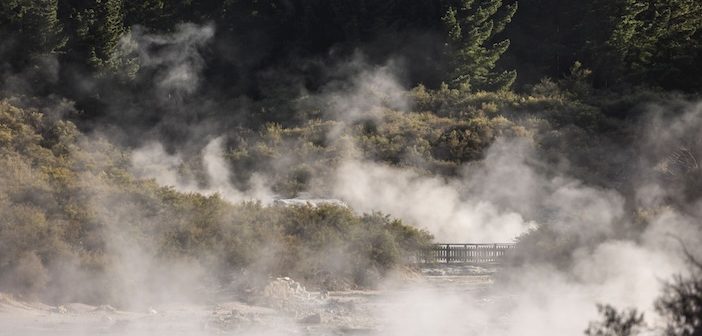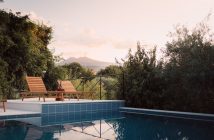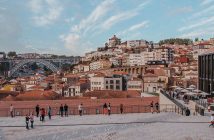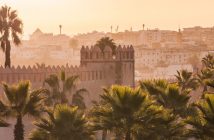It can be an eerie sight, watching steam rising from the earth in the morning sunshine. In New Zealand – and particularly in the area around Rotorua – however, it is not an unusual one. New Zealand possesses a very visible level of geothermal activity and in these parts the steam drifts upwards from river banks and parks, even the drains and gutters, and the unmistakable (and not exactly delicate) smell of sulphur hangs in the air.
While there is evidence of volcanic activity throughout NZ – usually in the form of long dormant, grassy but perfectly conical hills – in Rotorua, in this northerly part of the North Island, it is alive and tangible. Lake Rotorua fills the caldera of an extinct volcano, while in its centre a newer volcano (also inactive) rises out of the water.
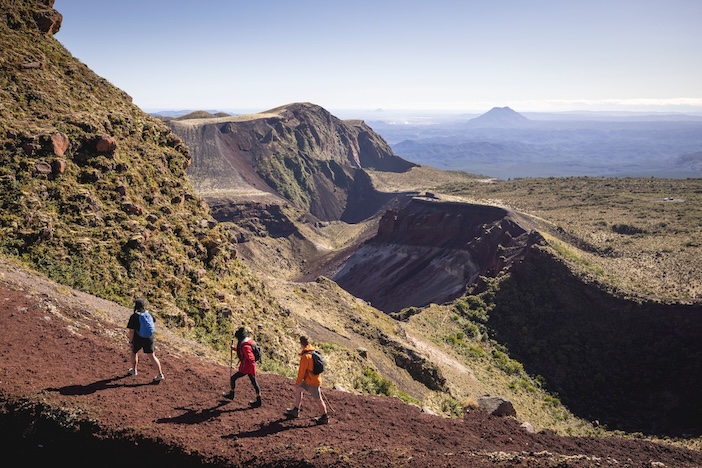
Guided hike on Mt Tarawera (photo by Miles Holden)
All around, in fact, there are volcanoes and signs of their often devastating effects – Mt Tarawera last erupted with great violence in 1886 when it destroyed the local Maori village and many people were killed, their land buried deep in mud and ash. It, too, now houses a deceptively placid and pristine lake. There are 18 such lakes in the Rotorua region and on their northern shores, thermal springs rise up through the lake beds, warming the water and creating the steam that drifts around the cliffs. Quantities of minerals sometimes give these lakes great depth of colour – bright blue or bright green waters almost side by side.
All this before you even arrive in Rotorua itself, a town with that perpetual aroma of devilish sulphur. On the outskirts is Te Puia, one of the best places to see geothermal activity in, well, action. The most impressive sight here is surely the geysers – the boiling water of the Pōhutu geyser erupts once (sometimes twice) every hour and is the biggest geyser in the southern hemisphere, shooting water and steam up to 30 metres into the air.
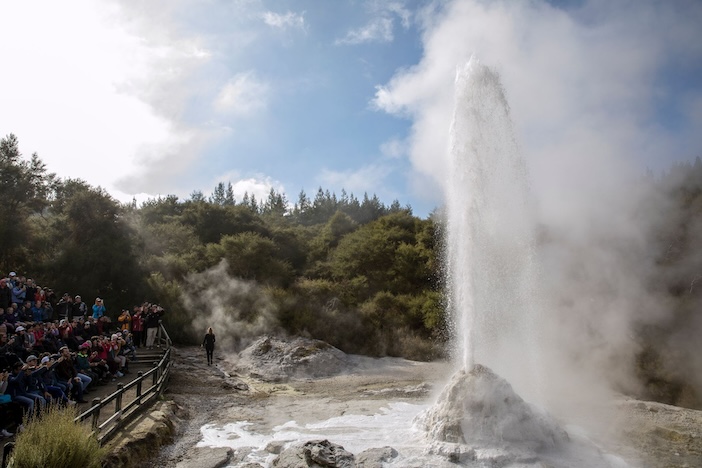
Rotorua geyser (photo by Matt Crawford)
Pōhutu means “constant splashing” in Maori. It is, in fact, just one of a whole terrace of interconnected geysers that erupt in quick succession. There are boiling mud pools that bubble and gloop threateningly. Rather more friendly are the steam vents and hot pools where your guide can cook you some local delicacies in a uniquely Maori way. (I do recommend the kai moana or seafood.)
If you want to get even closer to the geothermals, there is a day spa in Rotorua itself with a range of treatments using the local mud and waters or you could try Hell’s Gate (Tikitere) where you can get into the mud (exfoliates the skin) and sulphur spa where you exfoliate and cleanse further as the local Maori have for over 800 years. Or you could walk through the Craters of the Moon where the underground activity reaches the surface as fumaroles, geysers, mud pools and hot springs and the elevated walkway is shrouded in steam.
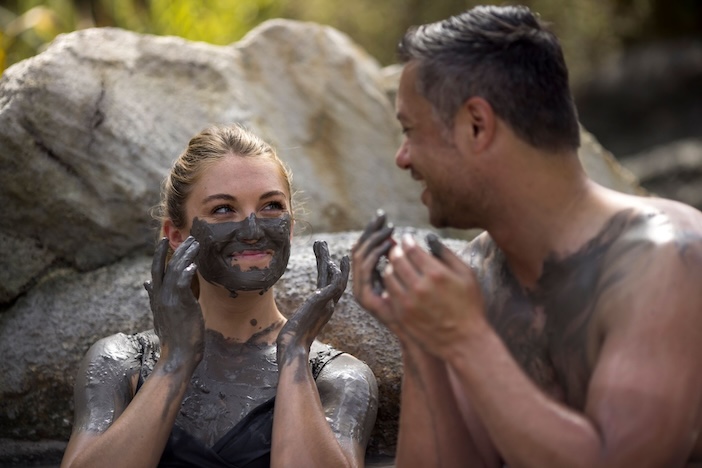
Mud pool treatment (photo by Miles Holden)
Back at Tu Puia, there is a Maori cultural centre – not just a museum, though there is a fine display of carving and weaving, but also an academy for Maori arts and crafts where the skills are taught today. It’s an extensive studio where the craftsmen and women are working but free to chat and explain the techniques and history of their work, ranging from flax weaving to carving stone, bone and wood. My favourite was the greenstone known here as pounamu and known to us more commonly as jade that can be made into traditional styles or more contemporary and exquisite jewellery.
There is, too, a marae, traditional village and meeting house – stunning examples of Maori architecture – where there are cultural performances of traditional singing and dancing (not to mention the Haka, of course). You can also visit the dark gallery built as a home for the nocturnal kiwi, part of a protected breeding programme, one of the few places where you can see the endangered birds (though they can’t see you).

The next day I took the train from Rotorua to Wellington, watching for mile after mile as the steam rose surreally through the foliage of forests of tree ferns and around the herds of sheep and cattle peacefully grazing in their fields, utterly umbemused by the most mysterious and haunting aspect of New Zealand.
For more information about Rotorua, including details of activities and top attractions, and to start planning your trip, please visit the official New Zealand tourism website at www.newzealand.com.
Anna’s encounters with New Zealand’s nature concludes tomorrow when she heads out to sea to experience the marine wildlife…
Photos courtesy of New Zealand Tourism

